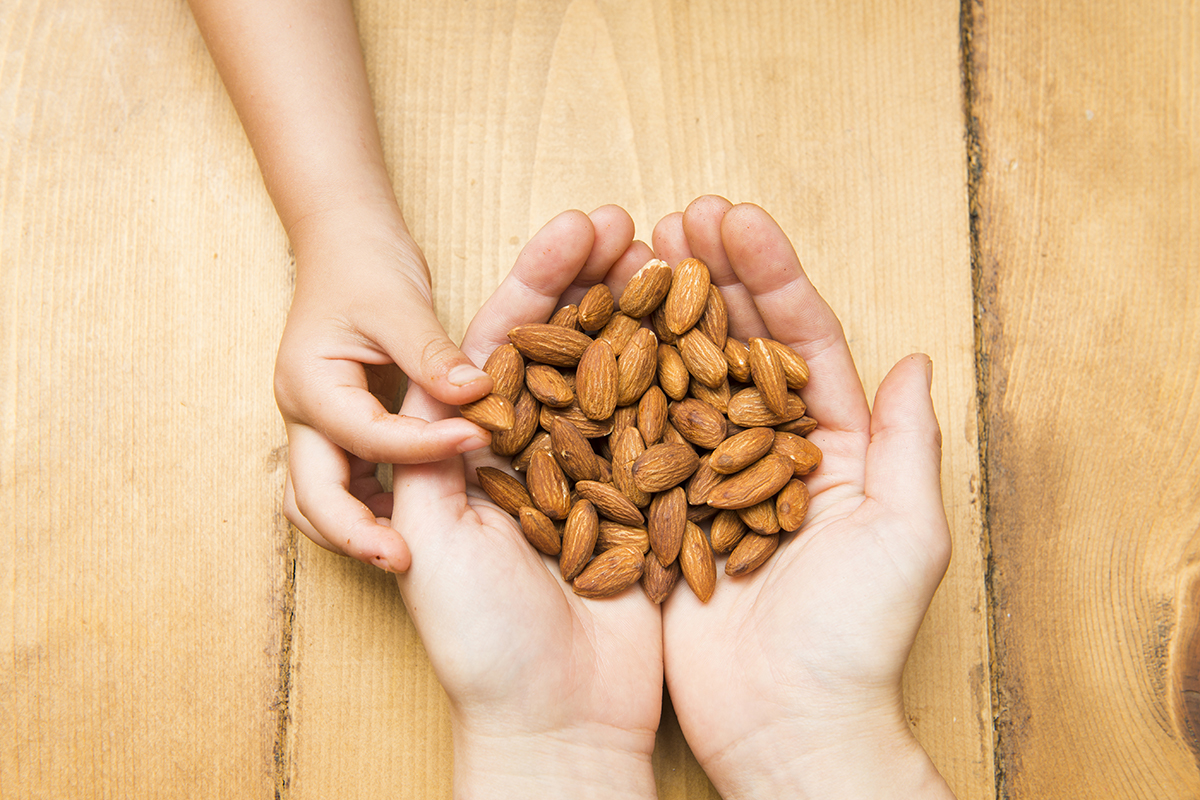As we all know, calcium plays an important role in your body. From building and maintaining your bones to aiding in muscle contraction, blood pressure regulation, nerve transmission, and blood clotting, calcium is an essential nutrient to include in your diet (1). The recommended daily allowance (RDA) for children aged one to three is 700 mg, for children four to eight years old is 1,000 mg, and for children nine to eighteen years old is 1,300 mg (2). Individuals who cannot consume or choose not to consume dairy products can still meet their RDA for calcium by consuming non-dairy calcium. In this article, you will learn about the top 6 sources of non-dairy calcium and how to include them in your child’s diet.
Fortified Tofu
When it comes to buying tofu, make sure it is fortified with calcium. Raw, firm tofu with added calcium provides about 683 mg per 100 g. Tofu without added calcium provides around 100-200 mg per serving. This food is also an excellent source of protein and contains all nine amino acids making it a complete protein. Tofu absorbs the flavors you cook with making it a great food to make for your little ones. The best ways to prepare tofu include:
- Making a tofu scramble.
- Adding into stir-frys.
- Baking tofu nuggets.
- Adding into tacos.
Almonds
Almonds are an easy snack to grab when you want to add healthy fats, calcium, potassium, and fiber to your diet. Only 100 g of almonds can pack 300 mg of calcium. Add to oatmeal, smoothies, salads, or even stir-frys. Adding this nutrient-packed food into your children’s daily routine will help them feel full and help meet their daily calcium requirements.
Beans
Beans are not only a great source of calcium, but they are full of protein, fiber, vitamins, and minerals. This combination of nutrients gives your little ones the variety of nutrition they need to help meet their daily requirements, especially when they do not consume dairy. A few calcium-rich options to try to include white beans (46 mg per 100 g), chickpeas (31 mg per 100 g), and red beans (31 mg per 100 g). Try sauteing or steaming them, add to salads, soups, or tacos, or serve simply as a side dish. Make sure to add some flavor, experiment with different sauces and seasonings to figure out how your children like them most.
Leafy Green Vegetables
They may not look like it, but leafy green vegetables are a rich source of calcium. Leafy green vegetables such as collard greens (175 mg per half cup), raw spinach (140 mg per half cup), and kale (90 mg per half cup) provide a nutritional boost of calcium to your plate. Your child may not be too keen on green leafy vegetables, but you can still add these nutritious green vegetables to their diet with some tricks. Try adding kale or spinach to a delicious tropical green smoothie, or bake them into muffins for a tasty green treat.
Fortified Soy Milk
If drinking cow’s milk is not an option, choosing fortified soy milk can be a great substitute for your child’s calcium needs. The average fortified soy milk contains 300 mg per cup. When buying at a store, check the label to make sure the soy milk has the calcium your child needs. Mix into smoothies, add to cereals or drink alone to increase calcium intake.
Chia seeds
You would not think that such a small seed is full of so much calcium, but this tiny powerhouse contains 180 mg per 2 tablespoons. Chia seeds are versatile seeds that can be used in a variety of ways. Try adding it to fortified soy milk to make a chia pudding rich in protein and calcium for breakfast or snacks. Sprinkle it on oatmeal or a yogurt parfait, bake it into muffins and bread, or even make a chia berry jam to add on some toast in the morning.
Sources
- Institute of Medicine. 2011. Dietary Reference Intakes for Calcium and Vitamin D. Washington, DC: The National Academies Press. https://doi.org/10.17226/13050.
- Calcium and vitamin d requirements. (2021, April 02). Retrieved from https://americanbonehealth.org/nutrition/how-much-calcium-and-vitamin-d-do-you-need/




